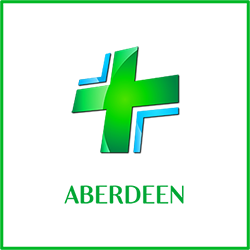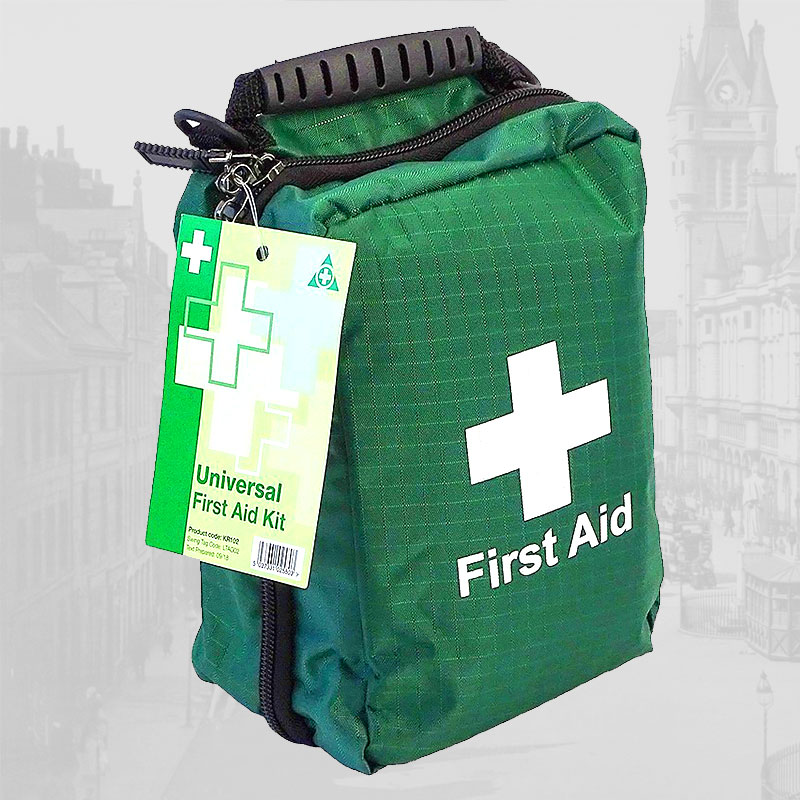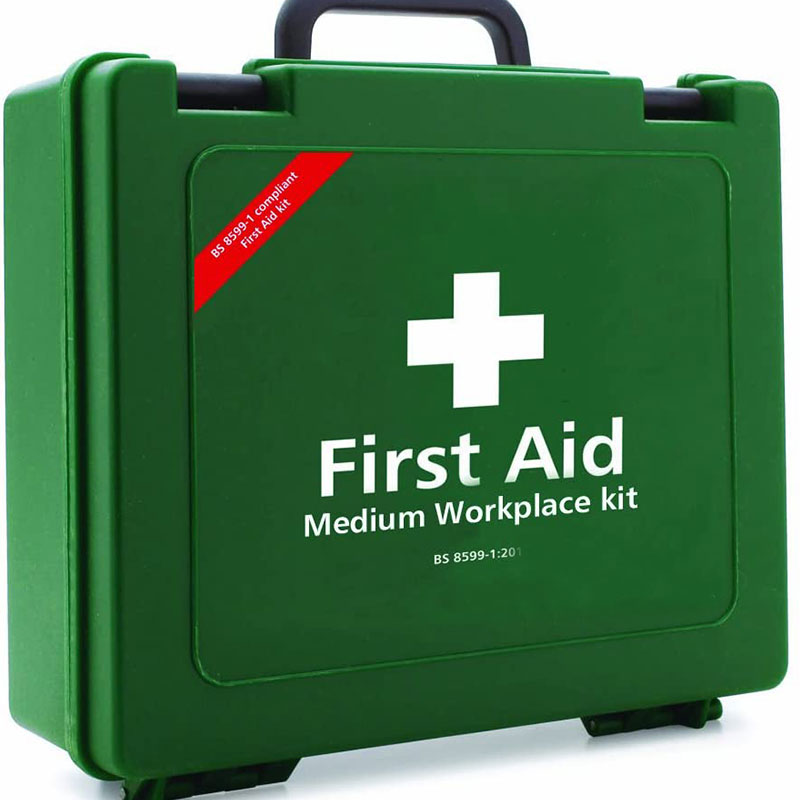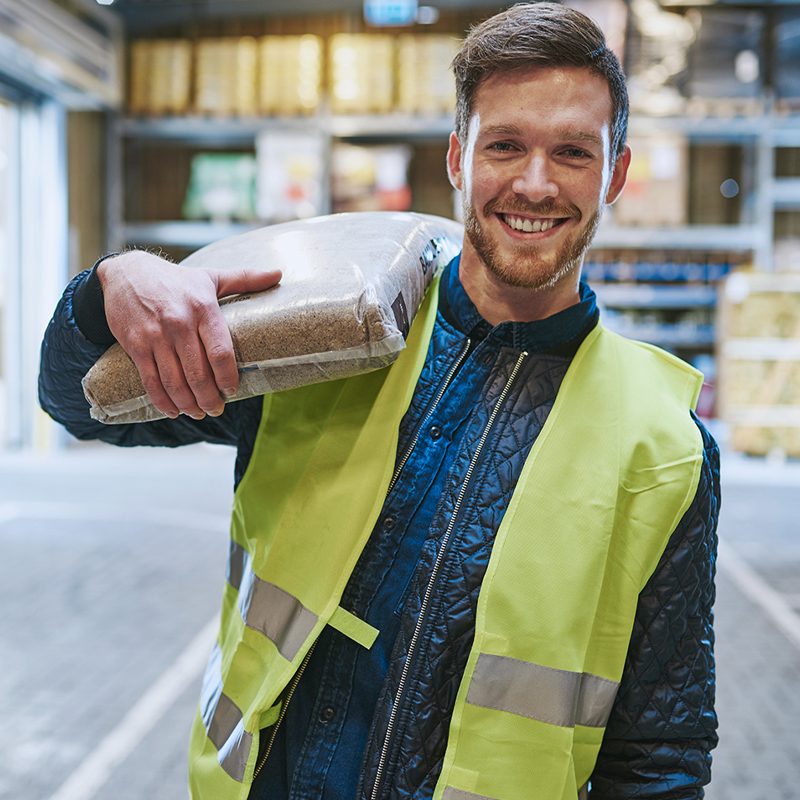 While accidents will always happen no matter how careful we try to be, many workplace injuries are preventable. A combination of training, proper equipment provision, readily available guidance, signage and sensible policies can reduce your workplace’s accident rate, resulting in a happier, healthier and more productive workforce.
While accidents will always happen no matter how careful we try to be, many workplace injuries are preventable. A combination of training, proper equipment provision, readily available guidance, signage and sensible policies can reduce your workplace’s accident rate, resulting in a happier, healthier and more productive workforce.
What are the most common injuries?
According to data from RIDDOR in 2016/17, out of 609,000 self-reported non-fatal workplace injuries (175,000 of which resulted in over 7 days absence), the most common causes are:
- Slips, trips and falls on the same level – 29%
- Lifting/handling – 22%
- Being struck by an object – 10%
- Falls from height – 7%
- Acts of violence – 7%
- Contact with machinery – 4%
- Strike against something fixed/stationary – 4%
We’re going to look at how you can minimise the risk of some of these accidents occurring with the right health and safety equipment and guidance.
Slips, trips and falls
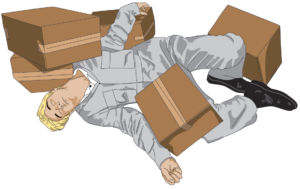
These can be caused by many things, including stray cables, obstructions on the floor like boxes or bags, and liquid spills or smooth wet floors. Whenever a floor becomes wet or slippery, signs should be put up quickly to mark the danger, so that anyone who walks through before the surface can be made safe knows to be cautious. A-boards are ideal for this. Any spills should be cleaned up as quickly as possible. Chemicals and bodily fluids pose an additional hazard and require special equipment to clean up. You can buy body fluid disposal equipment, suitable for medical settings, or a universal spill kit for more general use. A chemical spill should be dealt with according to its specific clean-up protocol, as per COSHH regulations.
To help avoid other falls, all work areas, especially staircases, should be well-lit at all times. Any cables that have to cross an open area where people might walk need to be covered with cable curbs so they pose less of a trip hazard. Stairs should always be treated with proper care and attention, and employees should not be required to do manual work without appropriate footwear. Our preventing slips trips and falls poster can help keep your employees reminded about safe working practises.
Lifting and handling
Incorrect or unsafe lifting and handling accounts for a large number of workplace injuries, most commonly to the back, shoulders or joints. All staff members who are required to do manual handling on a regular basis should be properly trained on how to lift and carry loads safely. You can book your workers onto a half day manual handling course with Safety First Aid Training.
If you haven’t had to do manual handling before, you might be surprised by how many things there are to consider when it comes to lifting safely. For example, on a cold day the worker’s hands might experience a loss of sensation, and on a hot one their palms may become sweaty, weakening their grip. Putting up a manual handling poster can serve as a constant reminder to your workers of their training and keep them focused on safety.
Falls from height
This is another type of workplace injury that is often preventable. Whilst not being as common as falls on the same level in terms of non-fatal injuries, it is, however, a leading cause of fatal accidents. A fall from height can be something as simple as falling off a chair when changing a light bulb, when a step-ladder should have been used. Even so, many of us probably don’t give much thought to how step-ladders should be used safely.
Working at height should be avoided whenever possible, but when it can’t be, the safest possible equipment should be used to prevent falls. An example of this would be using a Mobile Elevating Work Platform instead of a ladder. Where this is not possible or practical, ladders can be used for light, short duration work, but these should always be secured in place. If the risk of a fall cannot be eliminated, other measures, such as the use of fall arrest equipment, should be used. Help your workers implement safe working at height practises with our poster.
Treating workplace injuries
We all make mistakes from time to time and you can never eliminate the risk of accidents entirely. That’s why you should always ensure your workplace has an adequate level of first aid provision, with first aid supplies and trained staff. Browse our huge range of first aid kits here, and arrange for your staff to undergo first aid training with Safety First Aid Training.
By Safety First Aid
